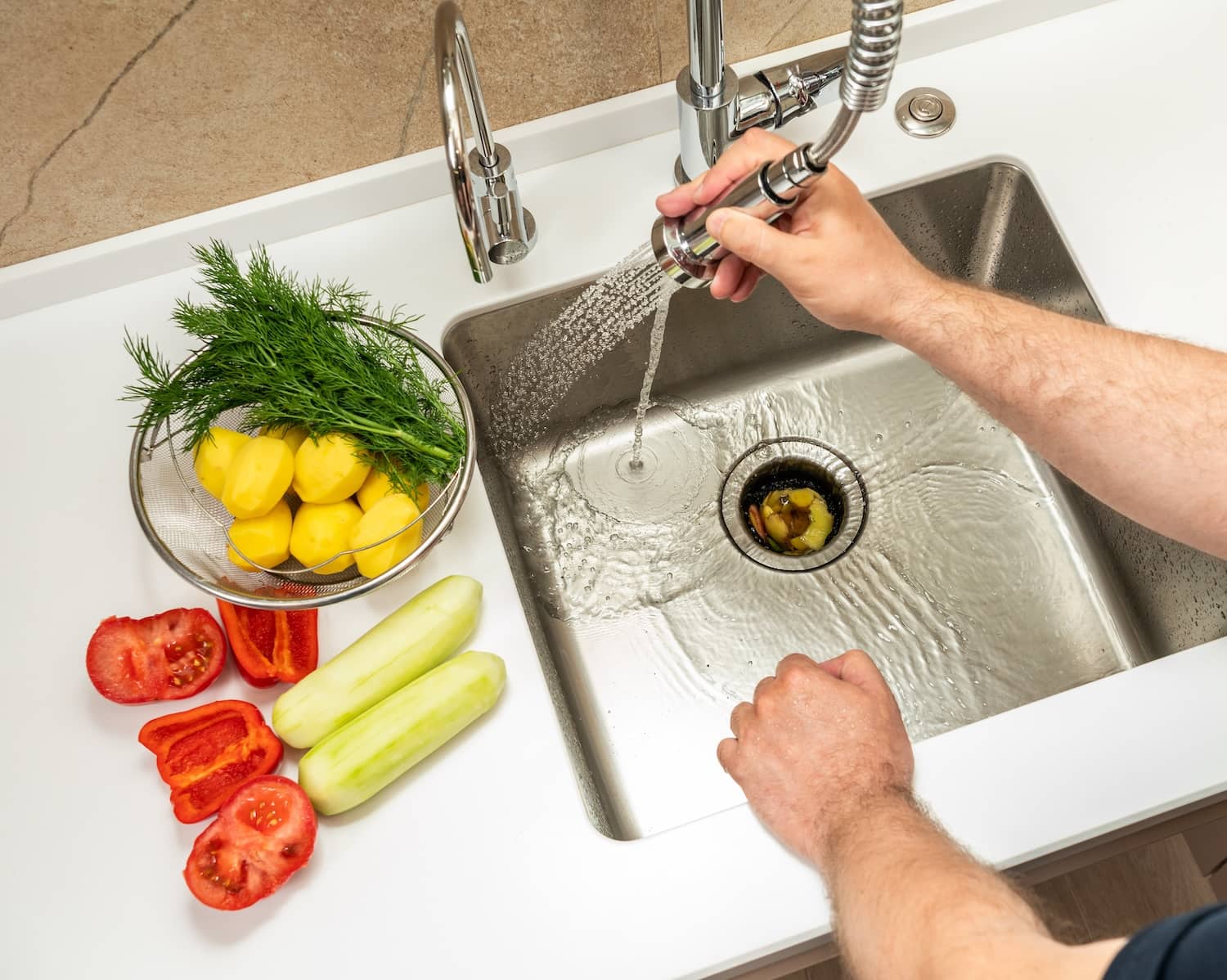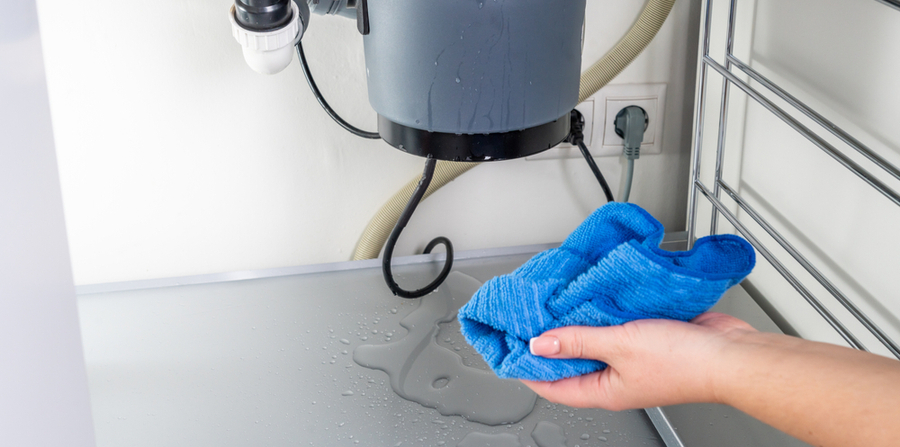Effective Techniques for Repairing a Dripping Garbage Disposal
Effective Techniques for Repairing a Dripping Garbage Disposal
Blog Article
This article following next on the subject of Garbage Disposal Leaking From Bottom is quite intriguing. Don't overlook it.

Garbage disposals are necessary cooking area devices that help in throwing away food waste successfully. Nonetheless, a dripping waste disposal unit can be an aggravating and messy problem to deal with. Fortunately, several leakages can be taken care of easily with a few simple steps. In this short article, we will go over exactly how to take care of a leaking garbage disposal effectively.
Intro
Waste disposal unit are set up under kitchen sinks and are made to shred food waste right into smaller items, enabling it to go through the pipes system easily. While these gadgets are usually trustworthy, leaks can take place in time as a result of deterioration, loose links, or damages to the unit.
Common Sources Of Leakages in Waste Disposals
Worn Seals and Gaskets
Seals and gaskets play a critical function in preventing water from leaking out of the waste disposal unit. Gradually, these parts can wear away, resulting in leaks around the disposal system.
Loose Connections
The links in between the garbage disposal and the pipes system can come to be loose in time, causing water to leakage out during procedure.
Splits or Holes in the Disposal Unit
Physical damage to the garbage disposal, such as cracks or holes in the housing, can likewise lead to leaks.
Determining the Source of the Leak
Prior to trying to deal with a dripping waste disposal unit, it is essential to identify the resource of the leakage. This can commonly be done with visual inspection or by performing basic tests.
Visual Inspection
Evaluate the garbage disposal system very carefully for any kind of indicators of water leak. Pay close attention to areas around seals, gaskets, and connection points.
Evaluating for Leaks
One way to examine for leakages is by running water via the disposal device and looking for any type of noticeable indications of leakage.
Tools and Materials Needed for Fixing a Dripping Waste Disposal Unit
Prior to starting the repair service process, gather the necessary devices and products, including a screwdriver, adjustable wrench, plumber's putty, substitute seals or gaskets, and epoxy or patching material for fixing cracks or openings.
Step-by-Step Guide to Fixing a Leaking Garbage Disposal
Shut off the Power
Before attempting any fixings, make sure that the power to the waste disposal unit system is turned off to avoid the danger of electric shock.
Locate the Leak
Identify the precise location of the leak and figure out the reason.
Tighten up Connections
Make use of a wrench to tighten any kind of loosened links in between the disposal system and the pipes system.
Change Seals or Gaskets
If the leakage is because of worn seals or gaskets, remove the old components and replace them with new ones.
Patching Cracks or Holes
For fractures or holes in the disposal unit, use epoxy or a suitable patching material to secure the damaged area.
Testing the Garbage Disposal After Repair Service
When the repair service is full, check the waste disposal unit by running water through it to make certain that the leakage has been fixed.
Preventive Maintenance Tips to Prevent Future Leakages
To stop future leaks, it is essential to do regular upkeep on your garbage disposal. This consists of maintaining it tidy, avoiding placing non-food things or difficult things down the disposal, and periodically checking for leaks or various other problems.
Verdict
Finally, repairing a leaking garbage disposal is a reasonably uncomplicated process that can be finished with standard tools and materials. By following the steps laid out in this post and practicing preventative maintenance, you can maintain your waste disposal unit in good working condition and prevent pricey repair work in the future.
What to Do About a Leaking Garbage Disposal
A leaking garbage disposal often goes unnoticed until you confront a sopping cabinet, a foul-smelling puddle, or an audible drip-drip-drip from the unit. The fix can be frustrating, too, because the leak can stem from a number of components in the system. Fortunately, with a little sleuthing, you can zero in on the leak and—depending on the exact location—stop the icky oozing and repair the component that caused it. Worst case scenario, if it turns out that the garbage disposal must be replaced, installing a new one is a reasonable do-it-yourself task for those with basic plumbing skills. Read on to keep the cash you’d otherwise hand over to a pro.
Prepare to find the leak
Prior to testing the garbage disposal for leaks, unplug it at the wall outlet and turn off the power from the breaker box to prevent electrical shock. Then insert a watertight sink stopper into your sink drain and wipe the unit dry with a clean cloth. In any handy container, mix a few drops of food coloring into a few cups of water, and pour the dyed water onto the sink stopper to help you locate the leak.
Investigate the source
the top, where the disposal meets the sink drain the side, where the dishwasher hose or main drain pipe connects to the disposal or the bottom of the unit Inspect each of these locations while gliding a light-colored rag over the unit; the dyed water will readily show on the rag and reveal the location of the leak. If a leak isn’t immediately apparent, remove the sink stopper and pour a few more cups of dyed water down the sink drain, then check for leaks again. Leaks near the top of the unit are more likely to show themselves while the sink is plugged, while side and bottom leaks are more noticeable while the sink is unplugged.
The metal sink flange that sits directly inside the sink drain is typically sealed around the top with plumber’s putty (a clay-like sealant) and then secured from under the sink with bolts. If the plumber’s putty deteriorates, or the bolts loosen, the flange can no longer form a watertight seal between the sink drain and the disposal—which could cause a leak at the top of the unit.
To reseal the leaky flange, you must first detach the garbage disposal. Start by loosening the screws securing the main drain pipe to the disposal, then loosen the screws in the metal clamp securing the dishwasher hose to the disposal and detach the drain pipe and dishwasher hose from the disposal. Loosen the screws in the mounting ring that connects the disposal to the metal mounting assembly beneath the sink, then pull down the disposal and carefully set it on a clean, dry surface. Loosen the bolts in the mounting assembly with a wrench, then pull down the mounting assembly and set it near the disposal.

Do you really like reading up on The Handy Guide To Fixing Your Garbage Disposal Leaking? Try to leave feedback directly below. We would be glad to see your reactions about this blog. We hope to see you back again before long. Do you know anybody else who is fascinated about Why Is ? Feel free to share it. I treasure reading our article about The Handy Guide To Fixing Your Garbage Disposal Leaking.
Schedule Appointment Report this page